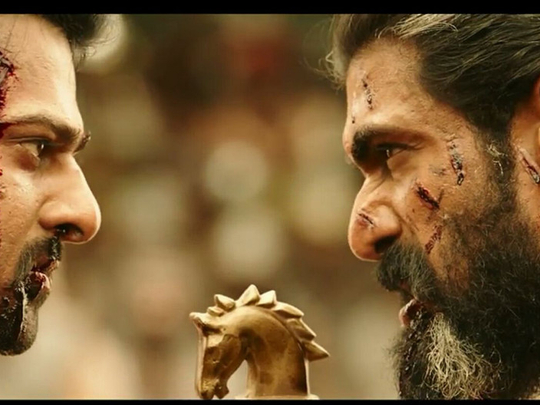
The Visual Effects (VFX) industry in India has a bright future as more and more top filmmakers will soon be looking at high-end fantasies. And, Indian mythology with its plethora of epic stories, has a lot of fantasies to offer, says Kotha Basi Reddy, the pioneer of digital technology in Indian films.
“VFX industry is going to grow after Baahubali. The films will involve a lot of computer graphics because [director S. S. Rajamouli] has shown that visualisation of fantasy is the most important thing in movies,” Reddy said in an interview.
“Hollywood movies go all over the world with so much CG and special effects because of fantasy. People love it,” said Reddy, who introduced digital technology into movie-making in India in 2003.
Reddy owns Digiquest, a VFX and animation studio that has contributed to the making of over 400 movies, including Baahubali, Magadheera, Eega, Katmarayudu and Kick.
He says Indian mythology could provide the best subjects for such movies.
“In Indian mythology there is so much of sci-fi. It’s not even funny. We talk about Ravana flying on a plane and taking Sita with him. There are many epic stories from Ramayana and Mahabharata,” he said.
Referring to the Hollywood movie Avatar, he said it was a blend of Rama and Hanuman.
“The whole world is learning from us, taking away things from us, but we have failed in creating a brand,” he added.
Reddy believes that if movies based on Indian mythology with VFX and CG are made, the whole world would watch them. He says that Indians have the ability to make such films, since work for many international projects is done in the country.
“Would you believe that the tiger in Life of Pi is not a real tiger but a digital one?” he asked and pointed out that most of the work on the movie was done in Hyderabad.
He admitted that Indian audiences don’t watch much animation and the movies are largely star-driven.
“This will change as new kids are coming. Digital will have a big role. You will see young stars making movies which will be internationally acceptable. It will no longer be song and dance movies,” Reddy said.
Reddy recalled that he bought costly digital equipment in the early years with a huge investment.
“The technology has changed a lot. I brought a digital camera which then cost $99,000 (Dh363,554). Today the same camera costs not even $99,” said Reddy, who has so far invested Rs300 million (Dh17.1 million) in his studio.
Though the revenues of Digiquest had reduced by half to Dh30 million as all production houses have gone 100 per cent digital, Reddy is happy that he contributed to the growth of the sector.
“I did not return to India from the US to make money,” said Reddy.
He is proud to have been part of the process that democratised the film industry.
“Youngsters, through short films, are showcasing their talent. Their films are getting millions of hits from all over the world,” he said.
Reddy is now trying to address the issue of manpower and has set up an academy offering courses in movie-making, visual effects, animation and game design.
“Our equipment is free not just for students of the academy but also others who bring a good script. The short movies will be uploaded on our channel and we will share the money,” said Reddy, who has so far produced eight short movies.
Reddy has a dream of making an Oscar-winning movie.
“It will be in animated format and I will work with my students to make it,” he said.
Reddy, who is a member of CII National Media & Entertainment Committee, lamented that the government is doing little to create better opportunities for talented people.
“There is so much of educational, research, simulation and training material to be created in the digital format in this country that we don’t have enough people,” he said.












